Olecranon Bursitis
What is an Olecranon Bursitis?
Olecranon bursitis is a medical condition characterized by inflammation of the olecranon bursa, a small fluid-filled sac located at the tip of the elbow. The olecranon bursa acts as a cushion between the skin and the bony prominence of the ulna, allowing smooth movement of the elbow joint. When this bursa becomes irritated or inflamed, typically due to trauma, infection, or repetitive friction, it can lead to olecranon bursitis.
Elbow pain, soreness, and swelling in the back are typical signs of olecranon bursitis. The skin above the area of inflammation may occasionally get red and heated. While small injuries or overuse frequently result in olecranon bursitis, bacteria entering the bursa can potentially cause infectious bursitis.
The root cause of olecranon bursitis determines the course of treatment. Anti-inflammatory drugs and the rest, ice, compression, and elevation (RICE) protocol can be used to treat non-infectious instances. Antibiotics may be necessary for infectious bursitis. Aspiration of fluid from the bursa or other medical procedures may be explored in more severe or chronic instances.
For a precise diagnosis and individualized treatment plan, it is essential to speak with a healthcare provider. Timely and right therapy can help reduce symptoms and avoid problems.
What is a Bursa?
A bursa is a small sac that contains a small amount of fluid. The fluid is similar to the fluid in joints (synovial fluid). There are several bursae in the body, including one just over the olecranon. Bursae help to make movement smooth between bones which ‘stick out’ and the overlying skin.
The olecranon (oh-LEH-cruh-nahn) is the pointy bone at the tip of the elbow. The bursa is the thin sac of fluid that lies between this bony tip and the skin. It helps the skin slide over the bone smoothly. Normally, this sac has only a tiny bit of fluid inside of it and lays flat.
Olecranon bursitis is a common inflammatory pathology of the elbow. Olecranon” refers to the pointy bone in your elbow. “Bursitis” refers to inflammation of a part of your body called a bursa.
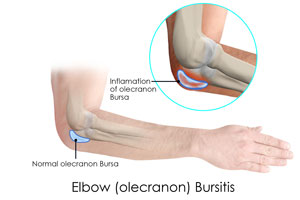
Normally the bursa cannot be felt but when it gets inflamed, it becomes larger so that you can see the bulge and feel a soft lump over the back of your elbow. It is sometimes said to resemble the shape of a goose egg, although it may come in different shapes and sizes. Bursitis can also commonly occur in joints near your:
- shoulder
- hip
- knee
- heel
Olecranon bursitis is also known as Student elbow, Elbow bursitis, Baker’s elbow and sometimes it’s called Popeye’s elbow.
Types of olecranon buesitis
There are two types of olecranon bursitis:
- Infected (septic)
- Non-infected (aseptic)
Causes of Olecranon Bursitis:
Trauma, such as hitting the elbow or falling on the back of the elbow, can lead to olecranon bursitis and has been described often in football, hockey, basketball, and volleyball players.
Most patients develop the condition due to repetitive flexion-extension movements at the elbow, causing irritation of the bursa. For example, those whose sports involve throwing by raising the arm above the head (such as cricket or baseball players, javelin throwers) or weightlifters.
People who lean their elbows against hard surfaces can develop this problem over time. Plumbers, air-conditioning technicians, and others who have to work on their elbows are more likely to get this. When it occurs in people who study whilst leaning on their elbows on a desk, it is called ‘student’s elbow’. Other names include ‘miner’s elbow’, ‘plumber’s elbow’, etc, when the job involves crawling a lot using elbows.)
Those with conditions such as gout, rheumatoid arthritis, or kidney failure needing dialysis can be more likely to get this condition.
Infection: If your bursa is infected from a cut, scrape, or insect bite, this will cause the sac to fill up with extra fluid, swell, and get red.
Idiopathic: In many cases, the cause is not known.
Signs and Symptoms
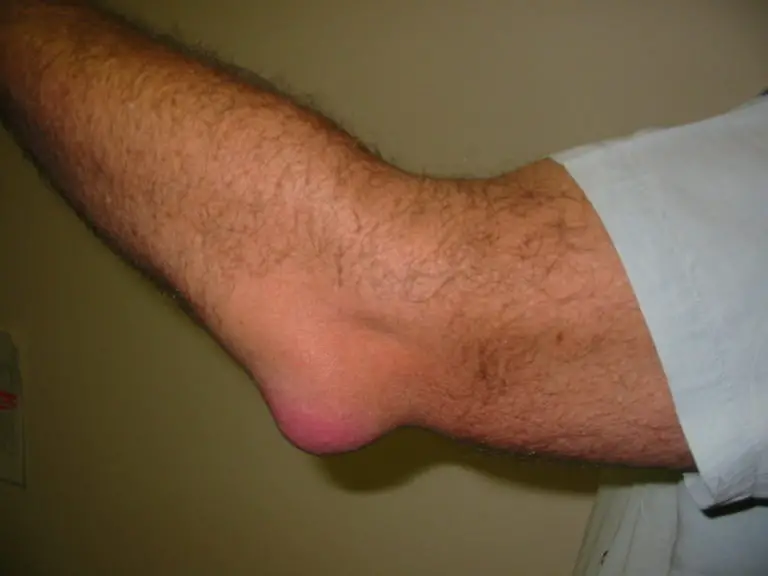
- Elbow stiffness
- Tenderness: Another sign is sensitivity in and around the elbow, achy feeling
- pain with movement or pressure
- Gradual swelling at the back of the elbow might not be noticed at first. Sometimes the swelling develops quickly.
- Bursal inflammation’s most classic finding is a swelling, at the posterior elbow. This swelling is clearly marked off by its appearance as a goose egg over the olecranon process. The swelling can worsen to look like a soft golf ball at the tip of the elbow.
- Most of the time with olecranon bursitis, the bursitis does not cause pain.
- The bursa can become infected, which will cause tenderness, redness, or warmth in the area; you may also have a fever.
- As the joint capsule is not involved, the range of motion is usually preserved, with minimal discomfort unless at the extremes of movement
- An infected bursa can break open and drain pus.
- Ensure to examine the contralateral elbow joint, as well as the joints above and below the elbow.
Epidemiology
Bursitis of the olecranon is somewhat frequent. This disorder is not linked to any mortality. Elbow pain in the posterior region can lead to morbidity and activity restriction. Men between the ages of 30 and 60 are usually affected.
- Inflammatory mediators are released or bursa hemorrhage results from sports injuries or recurrent trauma in two-thirds of nonseptic cases.
- There is no racial or sexual tendency.
- Adults and children can both get olecranon bursitis.
- Inflammation may be caused by uremia, a mechanical component, or prolonged hemodialysis therapy.
- Especially vulnerable are technicians who, in confined locations, crawl on their knees and rely on their elbows.
A crystal deposition illness like gout or pseudogout, or a systemic inflammatory disorder like rheumatoid arthritis, can also cause inflammation. Sunitinib, a medication used to treat renal cell carcinoma, may have an adverse effect that causes this syndrome.
Pathophysiology
The bursa experiences a reactive inflammation in response to the triggering event, which might be trauma or the introduction of an infectious pathogen. Protein and synovial fluid extravasate into the bursa as a result of the inflammatory process. The outcome is the characteristically noticeable circular swelling of this illness.
Differential Diagnosis
- Rheumatoid arthritis
- Elbow and forearm overuse injuries
- Gout and pseudogout
- Olecranon fractures
- Triceps tendon avulsion
- Cellulitis
- Septic arthritis
- Ligament rupture
- Neoplasm
- Hematoma
Diagnosis
To diagnose olecranon bursitis, your doctor might order an x-ray to look for a broken bone, bone spur, or calcium deposit at the elbow in patients who have had repeated instances of elbow bursitis.
Some fluid might be removed from the bursa with a needle and sent for testing. If the fluid in the bursa is pus, then an infection is present there. Laboratory tests are essential to differentiate septic from non-septic bursitis when doubt remains after clinical examination, so the aspirate should be sent for microscopy and culture.
Blood tests are not usually helpful. If there is any doubt about the diagnosis then treatment should be given as for a septic case until culture results are available.
Differential Diagnosis
Differential diagnoses for olecranon bursitis are:
- Inflammatory arthropathies
- cellulitis
- septic arthritis
- Rheumatoid arthritis
- Elbow and forearm overuse injuries
- Gout and pseudogout
- Olecranon fractures
- Triceps tendon avulsion
Treatment of Olecranon Bursitis:
In many cases, olecranon bursitis clears up on its own with simple care such as resting the elbow, avoiding pressure on it, and applying ice packs. Some people find a compression bandage on the elbow makes it more comfortable. As long as there is no infection, over time most cases of olecranon bursitis will then settle on their own.
Other treatments advised in some cases include:
- Anti-inflammatory medication (such as ibuprofen, naproxen, diclofenac, etc) may be prescribed to reduce inflammation and swelling. Paracetamol is another option if the elbow is painful.
- Draining the fluid (aspiration) can be done by a healthcare professional with a sterile needle and syringe if a lot of fluid builds up. However, the fluid tends to build up again after being drained. Therefore, you may be advised to wear a tight-pressure bandage for a while after the fluid has been drained, to prevent it from building up again.
- A steroid injection into the bursa may cure the problem. Steroids are good at reducing inflammation. However, steroid injections sometimes cause infection in the bursa.
- Surgery to remove the bursa is an option if the above does not work.
- Antibiotics are needed if the cause of the bursitis is an infection. Normally an antibiotic such as flucloxacillin or erythromycin is used until the results of the tests on the aspirated fluid are available. Then the choice of treatment can be changed if necessary and directed at the exact germs (bacteria) causing the infection. Flucloxacillin and erythromycin treat the most common types of germs that cause olecranon bursitis.
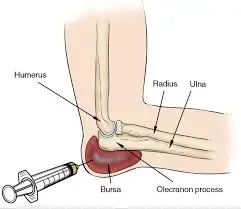
Surgical Treatment
Surgery for Infected Bursa
If the bursa is infected and it does not improve with antibiotics or by removing fluid from the elbow, surgery to remove the entire bursa may be needed. This is often an inpatient procedure, meaning you will need to stay overnight in the hospital. This surgery may be combined with further use of oral or intravenous antibiotics.
The bursa usually grows back as a non-inflamed, normally functioning bursa over a period of several months.
Surgery for Non-Infected Bursa
If elbow bursitis is not a result of infection, surgery may still be needed if nonsurgical treatments do not work. In this case, surgery to remove the bursa is usually performed as an outpatient procedure. The surgery does not disturb any muscle, ligament, or joint structures.
Although formal physical therapy after surgery is not usually needed, there are specific exercises to improve your range of motion. These are typically permitted within a few days of the surgery.
Complications
- Complications of the disease process include persistent pain and associated decreased functional use of the affected upper extremity.
- Potential complications of aspiration/injection are as follows:
- Swelling – This may recur, particularly if the patient does not maintain adequate pressure or icing at the site or if an infection was present at the time of the initial aspiration.
- Infection
- Persistent drainage through the injection tract
- Ulnar nerve injury – This theoretically may occur if a medial approach is used for the aspiration/injection.
Physical Therapy for Olecranon Bursitis
Here are some steps you can take to help heal your bursitis at home:
Rest
A good place to start when trying to heal your bursitis is to rest the joint.
Bursitis often happens to joints that are used for frequent repetitive motions. You can develop this condition because of sports like tennis or golf.
Elbow bursitis can also be caused by long periods of leaning on your elbows, or after a trauma, like falling on your elbow.
If a behavior or habitual action caused your inflammation, the best thing you can do is to avoid this action. If you can avoid irritating the bursa, often bursitis will go away on its own.
Ice
Icing the elbow for the first 48 hours after symptoms begin can reduce swelling.
The cold helps to reduce blood flow to the area, which can decrease inflammation. Cold therapy can also help temporarily relieve pain by decreasing nerve activity.
Never apply ice directly to your elbow, as this can cause injury to the skin. Instead, try wrapping the ice in a towel. Apply ice to the skin in short 15- to 20-minute periods to prevent nerve damage.
Heat
Try applying heat or taking a warm bath. Heat helps to improve circulation, which can help decrease stiffness. Heat can also work to soothe your discomfort.
It’s important that your heat therapy is warm rather than hot, so you can avoid the risk of burning yourself.
Treating with heat and cold can be effective for bursitis and many other types of inflammation. But if either causes you more pain or swelling, stop the treatment immediately.
Activity change
It’s good to avoid activities that apply pressure or stress on the elbow, including some types of contact sports, exercise sports, and heavy lifting.
If a repetitive action caused your flare-up, try your best to avoid those actions. If you must engage in it, try taking regular rest breaks or alternate that action with others. Talk to your doctor about what alternatives you could do instead.
Elbow pad
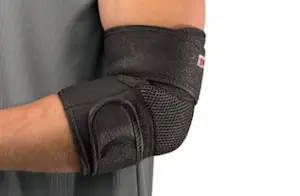
Use an elbow pad to cushion your elbow while you sit, work, or sleep.
Not only does the padding help you avoid hitting the elbow, but it also wraps the area around the elbow.
The wrapping causes compression and traps heat. Compression can help reduce swelling, and warmth can decrease stiffness.
Physical therapy
Certain exercises can help strengthen the muscles near the elbow to reduce pain and prevent problems in the future.
Modalities for pain relief: There are physical therapy modalities that could be helpful in reducing pain and inflammation. For example phonophoresis, and electrical stimulation. However, most patients with olecranon bursitis don’t necessarily need those modalities. The physical therapist can also take care of the patient’s education and present compensatory strategies for resting the involved upper extremity while healing takes place.
Consult with a healthcare professional before trying elbow rehabilitation exercises. You should also start slow and taper down your exercise regimen if you experience pain.
Common stretches include
Flexion stretch
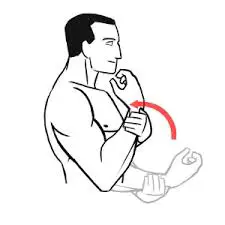
Lift the arm that hurts, and bend at the elbow.
Face your palm towards you.
With your other hand, gently press on the back of the affected forearm.
Press your hand towards your shoulder until you feel a stretch in your upper arm.
Hold for 15–30 seconds and repeat a few more times.
Extension stretch
Extend your affected arm in front of you with your palm facing away.
Bend your wrist back, with your fingers pointed towards the ceiling.
With your other hand, gently bend your wrist further, until you feel a stretch in your forearm.
Hold for 15–30 seconds, and repeat a few times.
Do the same steps, but this time point your finger down to the ground.
Pronation and supination stretch
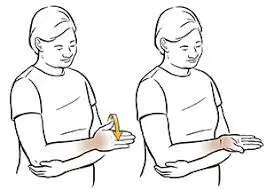
Bend the affected elbow at your side at about 90 degrees and make a fist.
Slowly turn your forearm back and forth in each direction (your hand will face up then down).
Hold each position for 6 seconds, and relax for 10 seconds in between.
Repeat 8–12 times.
Hand flips
In a seated position, place your hand and forearm on your thigh, palm facing down.
With your forearm still on your thigh, flip your hand over, so the palm is facing up.
Repeat 8–12 times.
Prevention
Not every kind of bursitis is preventable, but you can decrease the severity of this condition. You can also lower your risk of future flare-ups.
You should try to avoid lifting heavy loads and reduce the stress you put on the joint. That said, exercising and muscle building could help prevent future injury.
If you have or are prone to bursitis, make sure to stretch and warm up before any exercise or activity that could cause stress to the joint. Talk with an exercise professional if you have questions about what types of exercises to do.
Prognosis
Olecranon bursitis is generally benign if there are no major medical co-morbidities, especially if immunosuppressive conditions are present. In a generally healthy patient, there is very little chance that infectious bursitis may proceed to a systemic infection. In fact, the young healthy patient may have a higher likelihood of spontaneous remission without therapy than of developing systemic illness.
Conclusion
In conclusion, olecranon bursitis is a condition marked by inflammation of the bursa at the tip of the elbow. Whether caused by trauma, overuse, or infection, timely and appropriate management is crucial.
With a combination of rest, medications, and, in some cases, medical interventions, individuals with olecranon bursitis can often find relief and prevent complications. Seeking prompt medical attention ensures a more effective and tailored approach to address this elbow-related ailment.
FAQ
How do you treat olecranon bursitis?
The first line of therapy, if the olecranon bursa is not diseased, is to refrain from doing anything that puts direct pressure on the elbow. Decrease the swelling by icing the elbow for 15-20 minutes, twice a day, and applying compression with a wrap or compression sleeve.
What causes elbow bursitis?
Repetitive movements or postures that apply pressure to the bursae around a joint are the most frequent causes of bursitis. Throwing a baseball or repeatedly lifting something over your head are two examples. extending your arm to rest on your elbows.
Does olecranon bursitis need surgery?
The standard treatment for elbow bursitis, or inflammation of the bursa, includes fluid drainage, anti-inflammatory medications, corticosteroid injections, and rest. If the bursa becomes infected and does not respond to fluid evacuation or antibiotic therapy, elbow surgery can be required.
What are the 3 symptoms of bursitis?
The most typical symptoms of bursitis include pain, swelling, and soreness in the vicinity of a joint. Rest and anti-inflammatory medications can be used to treat bursitis.
Is olecranon bursitis serious?
Bursitis of the olecranon is somewhat common. This disorder is not linked to any mortality. Elbow pain in the posterior region can lead to morbidity and activity restriction. Men between the ages of 30 and 60 are usually affected.
Is olecranon bursitis painful?
Some patients with elbow bursitis never feel any discomfort at all, and at first, there may not even be any swelling. But as the olecranon bursa expands more and more, it might hurt or become uncomfortable, especially while bending or straightening.
Who treats olecranon bursitis?
Orthopedic surgeons, physical therapists, sports medicine doctors, and primary care physicians are among the medical professionals who treat elbow bursitis.

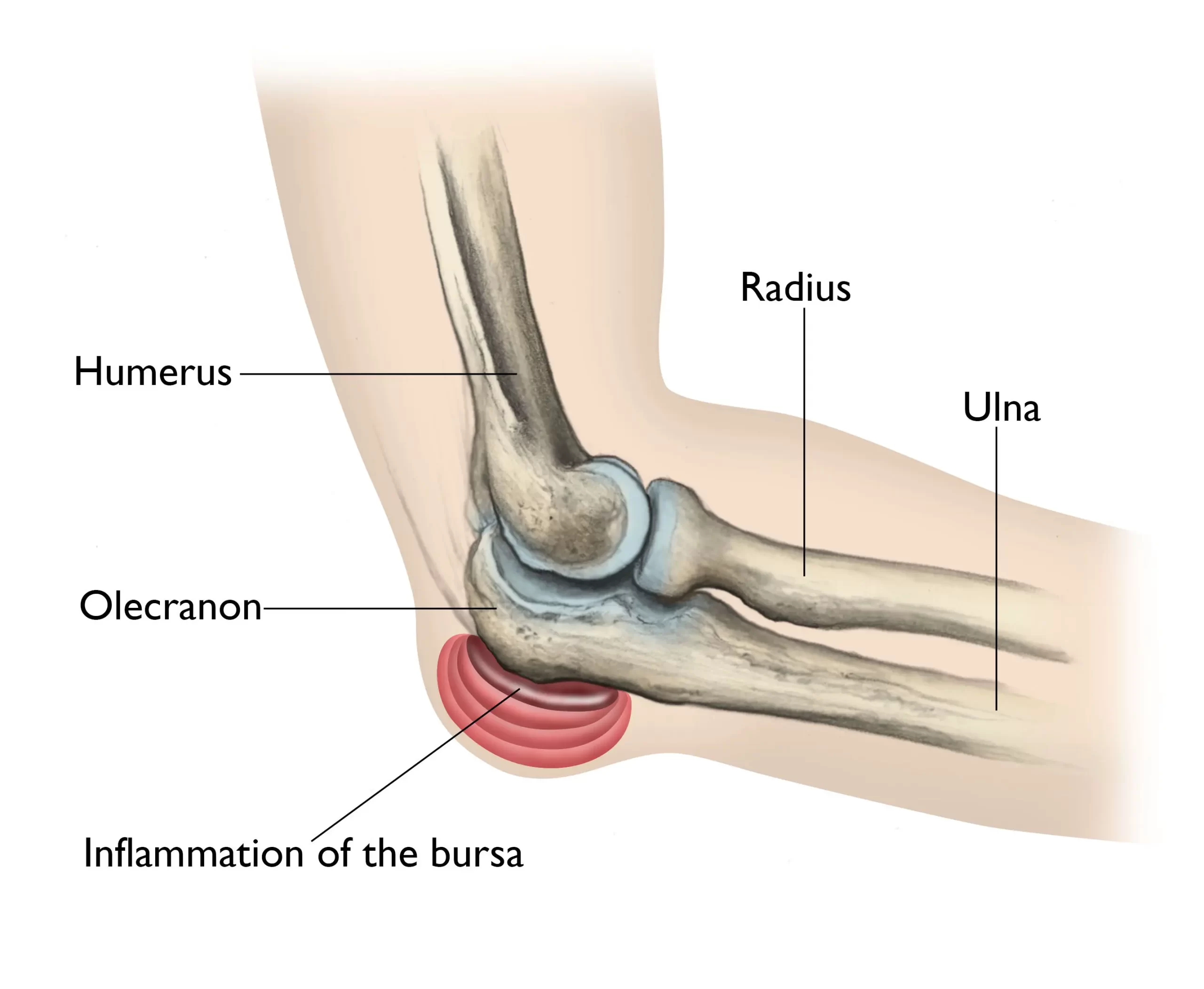
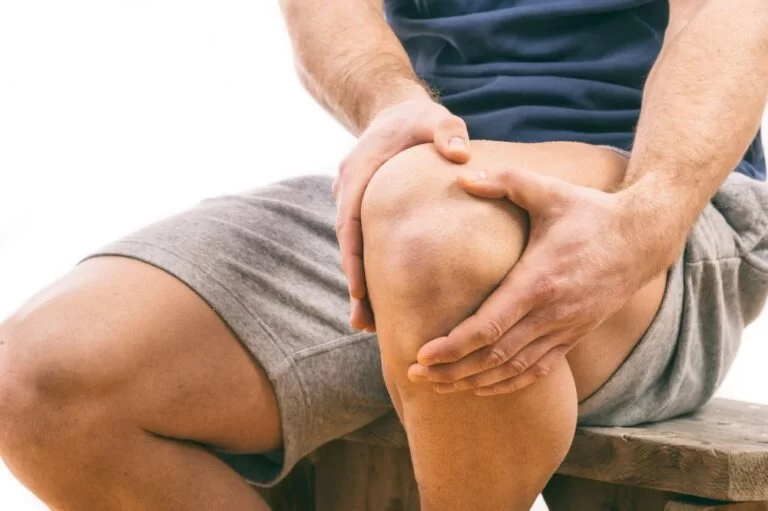
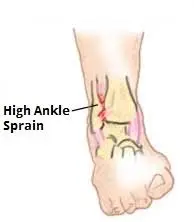
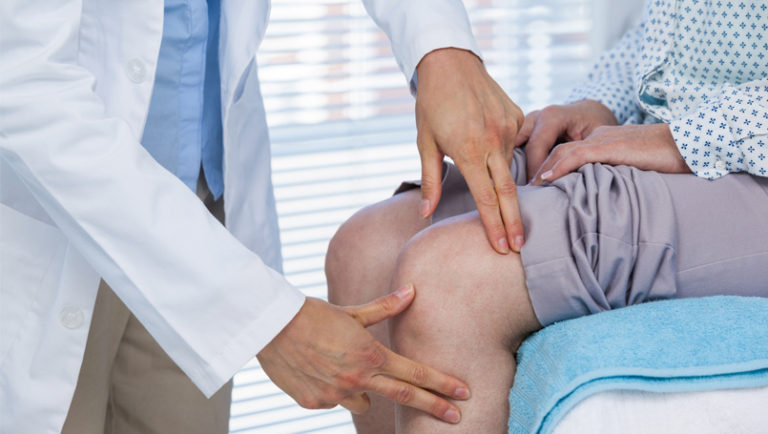

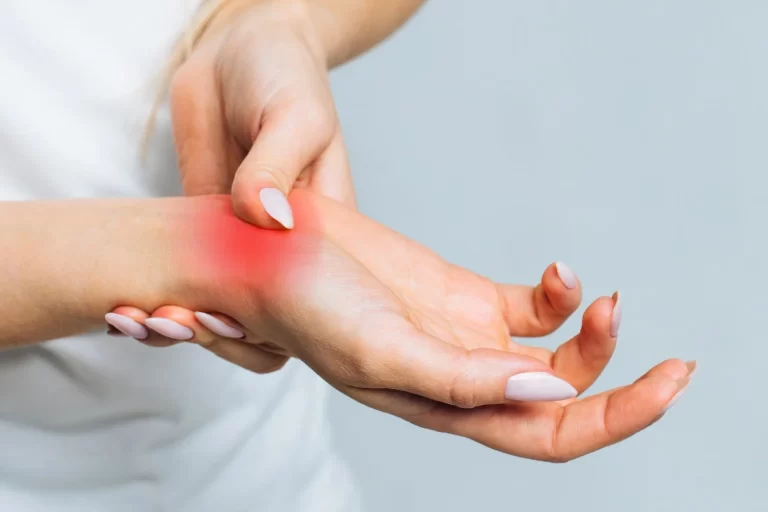
3 Comments